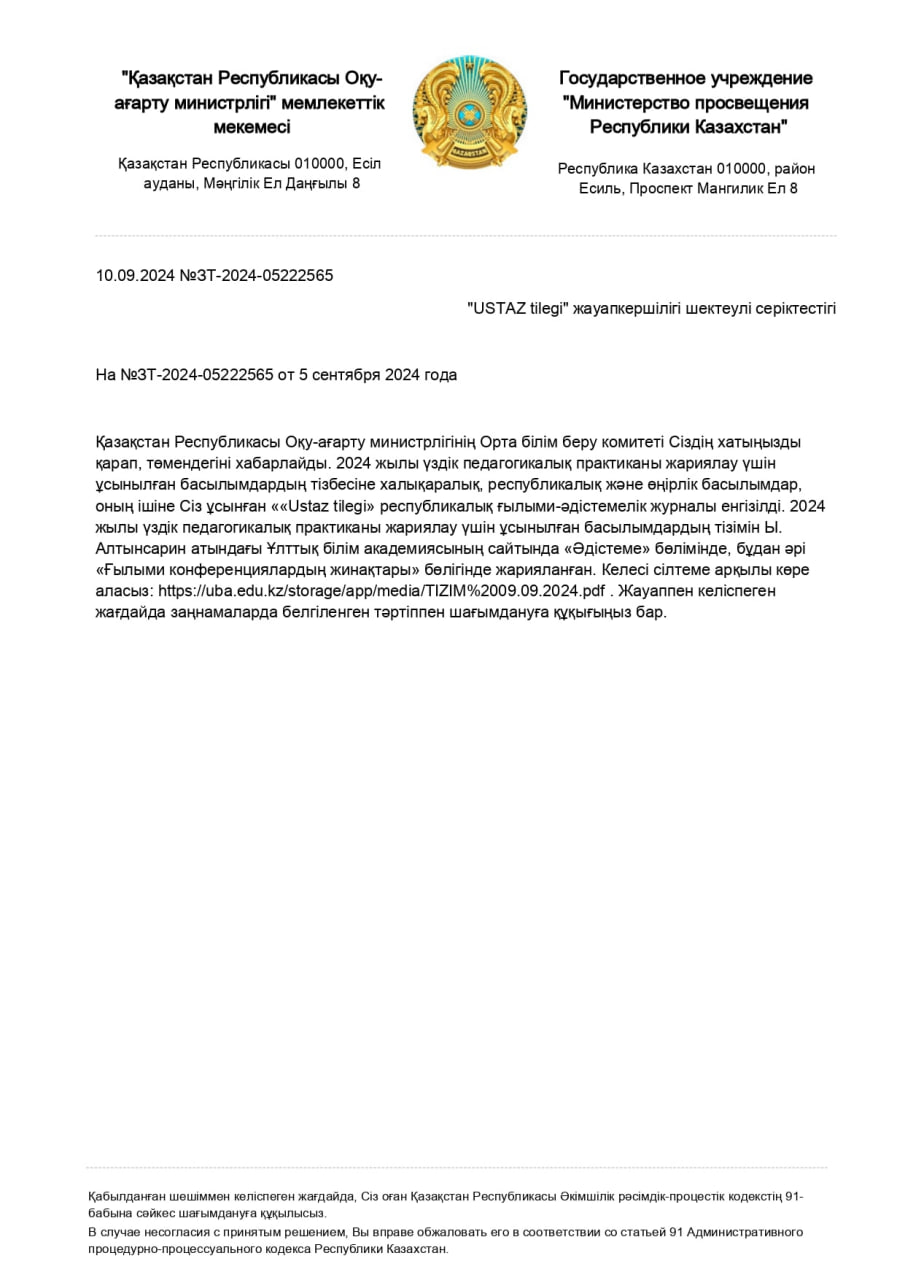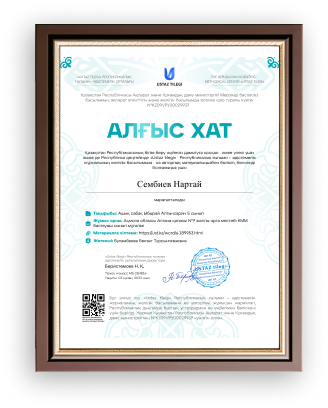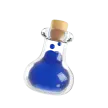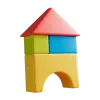
|
Term 2 Unit 4 "Sport, health and exercise" |
School: |
||||||||||
|
Date: ___. ___.2018 |
Teacher’s name:
|
||||||||||
|
Grade 8 __ |
Number present: |
Number absent: |
|||||||||
|
Theme of the lesson: |
CLIL: Language and literature: Newspapers. |
||||||||||
|
Learning objectives(s) that this lesson is contributing to |
8.C10 use talk or writing as a means of reflecting on and exploring a range of perspectives on the world 8.S7 use appropriate subject-specific vocabulary and syntax to talk about a range of general topics, and some curricular topics 8.R1 understand the main points in texts on a growing range of unfamiliar general and curricular topics, including some extended texts |
||||||||||
|
Lesson objectives |
All learners will be able to: |
||||||||||
|
|||||||||||
|
Most learners will be able to: |
|||||||||||
|
|||||||||||
|
Some learners will be able to: |
|||||||||||
|
|||||||||||
|
Value links |
Information and media literacy. |
||||||||||
|
Cross curricular links |
Information technology, Social studies. |
||||||||||
|
Previous learning |
My country: Sport, health, exercise. |
||||||||||
|
Use of ICT |
Smart board for showing a presentation, getting additional information, playing the audio files. |
||||||||||
|
Intercultural awareness |
Learners can talk about newspapers in Kazakhstan and other cultures. |
||||||||||
|
Health and Safety |
Breaks and physical activities used. |
||||||||||
|
Plan |
|||||||||||
|
Planned timings |
Planned activities |
Resources |
|||||||||
|
Beginning the lesson |
The lesson greeting. The teacher sets the lesson objectives, letting students know what to anticipate from the lesson. Warm up. Free talk.
|
|
|||||||||
|
Main Activities |
Ex.1 p.53. Conveying the meaning of new words. Matching task. Answers: Photo A: 2, 5, 6, 7, 9 Photo B: 1, 3, 4, 8, 9, 10 9 appears in both types of newspapers. Ex.2 p.53. Reading for detailed comprehension. Ex.3 p.53. True/false statements. Answers: 1) False. A lot of people still prefer to get the news in a more traditional way, by reading a newspaper. 2) Don't know. 3) True. Quality newspapers use a formal style of language with longer sentences and technical vocabulary. Sensationalist newspapers use shorter words and sentences, with colloquial words and expressions. 5) True. 6) False. Both types of newspaper contain articles about sport. Ex.4 p.53. Questioning. Ex.5 p.53. Problem-solving task. |
CD |
|||||||||
|
Ending the lesson |
Giving the hometask. Essay "Are newspapers necessary today?" Self-assessment.
If children liked something at the lesson they put it into the column “plus”, if they didn’t like or were bored during some part of the lesson, they can use the column “minus”, the section “interesting” is for those activities which were interesting during the lesson. |
|
|||||||||
|
End 1min |
Feedback: Teacher asks students what task was difficult to them and which pair worked well. |
|
|||||||||
|
Additional information |
|||||||||||
|
Differentiation – how do you plan to give more support? How do you plan to challenge the more able learners? |
Assessment – how are you planning to check learners’ learning? |
Critical thinking
|
|||||||||
|
Differentiation can be achieved through the selection of activities, identification of learning outcomes for a certain student, provision of individual support to learners, selection of learning materials and resources based on the individual abilities of learners. |
Assessment criteria:
Descriptor: A learner:
|
Students think critically, exploring, developing, evaluating and making choices about their own and others’ ideas |
|||||||||
жүктеу мүмкіндігіне ие боласыз
Бұл материал сайт қолданушысы жариялаған. Материалдың ішінде жазылған барлық ақпаратқа жауапкершілікті жариялаған қолданушы жауап береді. Ұстаз тілегі тек ақпаратты таратуға қолдау көрсетеді. Егер материал сіздің авторлық құқығыңызды бұзған болса немесе басқа да себептермен сайттан өшіру керек деп ойласаңыз осында жазыңыз
Unit 4 "Sport, health and exercise"
Unit 4 "Sport, health and exercise"
|
Term 2 Unit 4 "Sport, health and exercise" |
School: |
||||||||||
|
Date: ___. ___.2018 |
Teacher’s name:
|
||||||||||
|
Grade 8 __ |
Number present: |
Number absent: |
|||||||||
|
Theme of the lesson: |
CLIL: Language and literature: Newspapers. |
||||||||||
|
Learning objectives(s) that this lesson is contributing to |
8.C10 use talk or writing as a means of reflecting on and exploring a range of perspectives on the world 8.S7 use appropriate subject-specific vocabulary and syntax to talk about a range of general topics, and some curricular topics 8.R1 understand the main points in texts on a growing range of unfamiliar general and curricular topics, including some extended texts |
||||||||||
|
Lesson objectives |
All learners will be able to: |
||||||||||
|
|||||||||||
|
Most learners will be able to: |
|||||||||||
|
|||||||||||
|
Some learners will be able to: |
|||||||||||
|
|||||||||||
|
Value links |
Information and media literacy. |
||||||||||
|
Cross curricular links |
Information technology, Social studies. |
||||||||||
|
Previous learning |
My country: Sport, health, exercise. |
||||||||||
|
Use of ICT |
Smart board for showing a presentation, getting additional information, playing the audio files. |
||||||||||
|
Intercultural awareness |
Learners can talk about newspapers in Kazakhstan and other cultures. |
||||||||||
|
Health and Safety |
Breaks and physical activities used. |
||||||||||
|
Plan |
|||||||||||
|
Planned timings |
Planned activities |
Resources |
|||||||||
|
Beginning the lesson |
The lesson greeting. The teacher sets the lesson objectives, letting students know what to anticipate from the lesson. Warm up. Free talk.
|
|
|||||||||
|
Main Activities |
Ex.1 p.53. Conveying the meaning of new words. Matching task. Answers: Photo A: 2, 5, 6, 7, 9 Photo B: 1, 3, 4, 8, 9, 10 9 appears in both types of newspapers. Ex.2 p.53. Reading for detailed comprehension. Ex.3 p.53. True/false statements. Answers: 1) False. A lot of people still prefer to get the news in a more traditional way, by reading a newspaper. 2) Don't know. 3) True. Quality newspapers use a formal style of language with longer sentences and technical vocabulary. Sensationalist newspapers use shorter words and sentences, with colloquial words and expressions. 5) True. 6) False. Both types of newspaper contain articles about sport. Ex.4 p.53. Questioning. Ex.5 p.53. Problem-solving task. |
CD |
|||||||||
|
Ending the lesson |
Giving the hometask. Essay "Are newspapers necessary today?" Self-assessment.
If children liked something at the lesson they put it into the column “plus”, if they didn’t like or were bored during some part of the lesson, they can use the column “minus”, the section “interesting” is for those activities which were interesting during the lesson. |
|
|||||||||
|
End 1min |
Feedback: Teacher asks students what task was difficult to them and which pair worked well. |
|
|||||||||
|
Additional information |
|||||||||||
|
Differentiation – how do you plan to give more support? How do you plan to challenge the more able learners? |
Assessment – how are you planning to check learners’ learning? |
Critical thinking
|
|||||||||
|
Differentiation can be achieved through the selection of activities, identification of learning outcomes for a certain student, provision of individual support to learners, selection of learning materials and resources based on the individual abilities of learners. |
Assessment criteria:
Descriptor: A learner:
|
Students think critically, exploring, developing, evaluating and making choices about their own and others’ ideas |
|||||||||

шағым қалдыра аласыз















